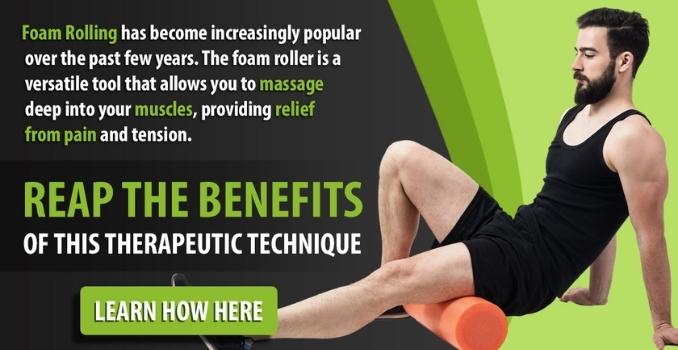
Trigger point therapy is not just about working the trigger points to relieve pain but also about using them to improve strength, posture, and movements. This advanced self-treatment is relevant primarily for people who are into fitness or have experienced strain in some specific muscles. The good news is that even a light workout can help you manage your trigger points. The problem comes when you overdo it and end up hurting yourself further instead of allowing yourself further. Working on trigger points is a delicate matter that requires the perfect balance between too much and too little pressure, intensity, frequency, and duration of your exercises. It’s easy to hurt yourself if you don’t know what you are doing.
Don’t Exercise the Same Trigger Point for too Many Times.
There is no golden standard for how often you should work the same trigger point. There are different schools of thought on this matter. Some say you should perform a trigger point for 2 to 5 days; others say you should do it for 2 to 5 weeks. There are specific rules of thumb you can use to decide how long you should work on a particular muscle:
1. If the trigger point is between your shoulder blades, you should work on it for one week or until it goes away. The upper trap is the most common trigger point in the back and will go away within a week. When you massage the upper web, you are also getting in there and working on the lower trap, which takes a bit longer to release.
2. If the trigger point is in your lower back, you should work on it for two weeks or until it goes away. The lower trap and rhomboid muscles are the most common trigger points in the lower back. They are very stubborn muscles and will take a while to release.
3. If the trigger point is in your hip area, you should work on it for four to six weeks or until it goes away. Trigger points in the glutes are common and take a long time to go away.
Here’s another video of Conor Collins from Trigger Point Solution with a tip for us regarding soft tissue work.
One of the most common misconceptions with soft tissue work is that it must be aggressive, but often it can end up being too aggressive.
What is Neuromuscular Barrier?
I want to give you one tip about the neuromuscular barrier. It is the point where you begin to feel muscular tissues pushing back against you.
When you are a manual therapist working on tissue, you rebound back into your hand aggressively.
When using a myofascial tool (for example, a foam roller or sports ball) as a personal or strength coach, if you are tensing up against it and moving too quickly into the neuromuscular barrier, you are causing damage.
You are not allowing the body to adapt to the touch of the tool or the hand.
As a result, your soft tissue work may be less effective than if you take your time getting into the structure.
The benefit of Using the Neuromuscular Barrier
A neuromuscular barrier monitors how your nervous system reacts to self-myofascial release or manual therapy.
It’s OK to be aggressive, but you must proceed cautiously. If you’re working on a tissue and you’re being repelled, ease up on the pressure, reconsider your objectives, and slowly advance more deeply into the structure.
We covered many grounds in the Trigger Point Solution about trigger points. If you’d like to learn more, please visit my website. Contact me at Conor(at)conorpcollins.com if you have any questions.
Trigger points are small areas of muscle tissue that feel like hard nodules under the skin when pressed. These painful spots indicate a lot of tension and pressure within the muscles.
Here’s another video of Conor Collins from Trigger Point Solution with a tip for us regarding soft tissue work.
One of the most common misconceptions with soft tissue work is that it must be aggressive, but often it can end up being too aggressive.
Let me explain:
What is Neuromuscular Barrier?
One tip that I want to give you is the neuromuscular barrier. That’s where you start to feel tissue push back against you.
If you are a manual therapist working on tissue, you get rebound back into your hand quite aggressively.
Or if you are a personal or strength coach and you are doing a self-myofascial release on yourself, and you find that you are contracting back against that myofascial tool (example – foam roller or sports ball), you are moving into the neuromuscular barrier, too quickly.
You are not allowing the body to adapt to the touch of the tool or the hand.
As a result, your soft tissue work may be less effective than if you take your time getting into the structure.
The benefit of Using the Neuromuscular Barrier
A neuromuscular barrier is a tool that measures the nervous system’s response to your self-myofascial release or your manual therapy.
It’s OK to be aggressive, but you must proceed cautiously. If you’re working on a tissue and you’re being repelled, ease up on the pressure, reconsider your objectives, and slowly advance more deeply into the structure.
We covered many grounds in the Trigger Point Solution about trigger points. If you’d like to learn more, please visit my website. Contact me at Conor(at)conorpcollins.com if you have any questions.
Take care and bye, bye.
Rick Kaselj, MS
If you liked the video above, here is another one for you:
Recommended Resource
Suppose you are a health and fitness professional and would like to understand better how to assess and what to do about trigger points, then I recommend Trigger Point Solution Program. It’s a fantastic resource.


